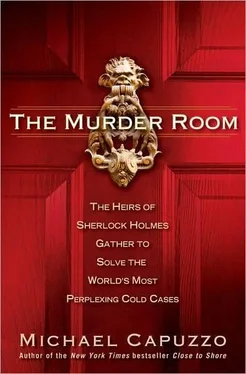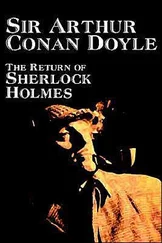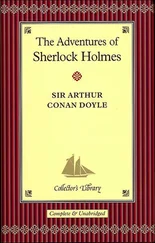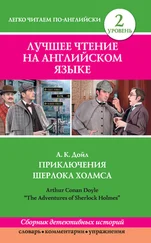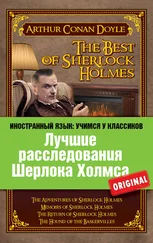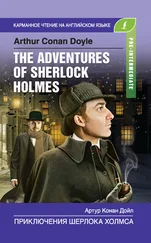He started by trying to amuse them with his “tale of woe.” After working a full day at the prison in Lansing, Michigan, he’d driven to Detroit, flown all night to London without sleeping a wink. He’d landed and “fumbled around like I do, getting lost in the airport and train system,” losing more time. He’d arrived at the Philadelphia office at 11:30 A.M., eager to rest for the speech the next day. “Oh, no,” they said. “The speech is today. It’s right now!” He was standing before them now nearly cataleptic with fatigue, and hoped for their forbearance.
It was true, but they were not amused. “They didn’t seem to care I hadn’t slept in thirty hours.” Instead, sensing his weakness, they attacked. Even one of his friends set him up, put him on the spot.
Now he had his Philadelphia cab driver stop at an all-night drugstore. Walter found the essentials and put them on the counter. The young clerk asked for ID to buy the cigarettes. He glared at her in disbelief.
“Madam, you’re carding me! I’m sixty goddamn years old! Look at this face!” Sweeping out the door, he muttered, “I’ll go somewhere where they require an IQ above seventy.”
Later in his Center City hotel room, overlooking Broad Street, he calmed down with a cigarette. His temper had come from addiction. “My exercise is inhaling,” he’d joke, or, “My exercise is coughing after smoking.” He was not proud of it, it was simply a fact. “During nicotine withdrawal, I become like a hawk eyeing a mouse. I simply cannot tolerate human frailty.”
He did not apologize for it. It was the cost of being R. Walter, bane to psychopaths on four continents. “With psychopaths I am far more predatory and in control, using a surgeon’s knife, in the superior position rather than being vulnerable to the biological charms of addiction,” he said. “And I am always in the superior position.”
Walter had many friends and more than a few enemies. Some forensic scientists refused to sit next to him at the American Academy of Forensic Sciences convention because he verbally destroyed presenters every year. Friends described him as a shining blade, too sharp for everyday use. Walter saw life, as Teddy Roosevelt once did, as a test of manhood. “One of the final tests as a man matures,” he said, “is to identify those things one loves enough to protect.” He’d risk his life to protect or avenge man, woman, or child. Like Roland and Siegfried in the old and forgotten stories, he would go alone into the cave in the dark with the sword when it counted. A week after Walter’s trip to Scotland Yard, FBI agent Robert Ressler had signed a copy of his new book, Whoever Fights Monsters: My Twenty Years Tracking Serial Killers for the FBI, “To Richard Walter, My good friend and fellow monster slayer.”
The red light was blinking on the telephone in his hotel room. A goddamn red light, he thought. Who the hell wants me now? He was planning to go to the bar. He wanted to hear only five words the rest of the night: “What will it be, sir?”
Reluctantly he picked up the phone. There were two messages. The first was from Bill Fleisher welcoming him to Philadelphia -and asking a favor.
“Richard, would you call Jim Dunn? He’s a bereaved father from Bucks County whose son disappeared a year ago in west Texas, a murder; the cops haven’t a clue. The case has got your name on it. Jim’s a good guy, and I felt sorry for him. Maybe you can find a way to help him when you’re in town.” Scowling, Walter wrote down the number.
The second message was from Dr. Richard Shepherd, forensic pathologist at Guy’s Hospital, London, internationally known consultant to Scotland Yard, the queen’s coroner. Shepherd, a good friend, had introduced Walter to the Scotland Yard audience. Shepherd was tall, commanding, a wicked wit, a pilot (bored with an AAFS convention in Chicago, he rented a small plane and flew over Lake Michigan), and a pathologist of “unsurpassed brilliance.” Walter hoped he was calling to apologize. By the end of his speech Walter felt he’d done passably well, parried with the critics, held his own. Then Shepherd pulled the doozy.
With a twinkle in his eye, Shepherd flashed a photograph of a murder scene on the screen. Lying on his back in the middle of a tidy, middle-class parlor was the corpse of a man who appeared to be in his sixties, prosperous, with short-cropped salt-and-pepper hair. He was wearing a wool shirt and casual, around-the-house gabardine trousers.
At first glance it looked like a heart attack or a stroke. But on closer inspection it was evident the trousers were unzipped at the fly. The man’s penis had been cut off. There was very little blood, considering. There was no knife or other weapon in the picture-and no penis. The penis was missing.
Walter had never seen the photo before. He didn’t know the case.
“Let’s see what the profiler can really do when he’s got nothing to go on but the crime scene,” Shepherd said. “Richard, the question is, what happened here? What does the photograph tell you? Who killed this man? And why?”
Walter’s eyes gleamed with the challenge.
Walter quickly sized up the victim by his age and condition and asked himself: How many circumstances can you think of where somebody’s going to lose their dick?
Then: This dick was punished for doing something. What did it do?
Walter ran through the possibilities.
He was murdered by a jilted lover or a vengeful husband. But the body said otherwise. “If it were a jilted lover, I would expect to see additional trauma on the body, hitting in the face and head, the sating of that anger. This was just cold and calculated, in and out.”
He was murdered by a jilted homosexual lover. The missing penis put him in mind of a homosexual murder in California in which the jilted queen murdered his lover, “who had a big dick, and he chopped it off, put it in the freezer, and was suspected of continuing to use it.” But if it were gay lovers you’d also see the highly emotional hitting and striking to try to achieve catharsis through all that anger and pain. The killer in this case made it clear the penis wasn’t important to him. He just wanted to deprive the guy of his penis. He may have thrown it in the sewer or whatever. It had no intrinsic value. He wasn’t a pervert putting it in the freezer and sucking on it as a lollypop.
He was murdered by a random sex killer acting out dark fantasies on a stranger. But if it were a sex killer, I would see more ritualistic things done to the body, such as excessive deep stabbings, leaving the body in a contorted, symbolic pose, the taking of souvenir body parts.
Having ruled out sadism and fantasy as motives, Walter was left with power or anger. The anger-driven killer over-killed from fury and inevitably covered the victim’s eyes, or threw him in a closet, as a final, “Take that, bitch!” This victim’s eyes were staring straight up, uncovered. The body was lying just as it had fallen, and was otherwise unmarked. One must always study the absence of evidence as well as the presence, and in this case the absence is important. There was no sign of over-killing from profound anger.
The killer had one purpose only. He did what he had to do and got out. There’s anger, but it’s no longer hot-it’s cold, controlled, organized.
The cold, efficient nature of the crime was the essence of it. The power-driven killer reacts to the sense of being wronged from a challenge to power rather than anger. Now the cold efficiency of the crime made sense.
It’s a power crush for the perp.
Walter sensed the crowd waiting. Given what we have here and what we don’t have, what are the remaining possibilities of an errant dick?
He was killed for making an unwanted homosexual advance on another man. But if the guy tried to suck his dick or feel him up or whatever else, he would have coldcocked him and knocked him in ninety-three different directions. The parlor would be a mess. Nothing in the parlor seems disturbed.
Читать дальше
